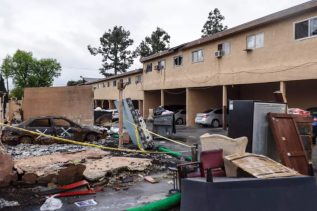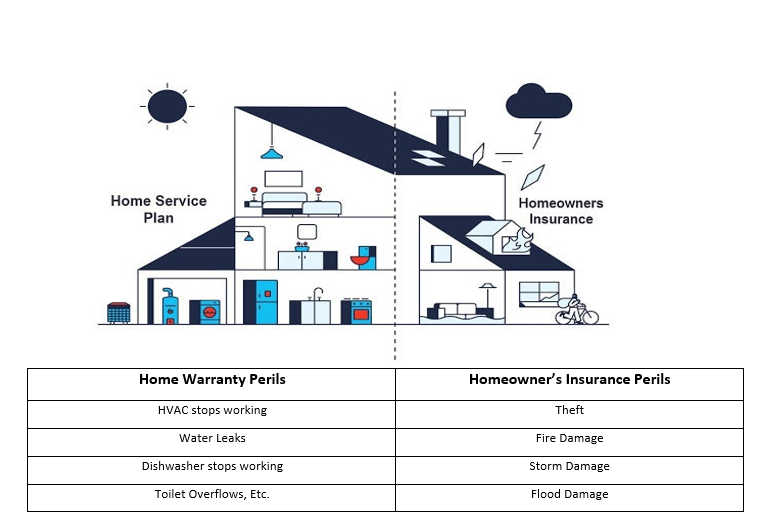After you complete your inspections and investigations, you should have time to compose and submit a Request for Repairs (RR). This step has two purposes;
- To address any physical defects that maybe discovered during the escrow period and
- A less palatable reason but many choose this opportunity to renegotiate the contract price.
Defects
As a buyer, you should know that the California Residential Purchase Agreement (RPA) has standard language in paragraph 11 that says, “the property is sold “AS IS” in its present physical condition as of the date of acceptance.” Despite this strong “AS IS” language, your Realtor should have helped you negotiate several contingencies in to the terms of the sale – one of which should allow you time to thoroughly inspect the property before being financially committed to the purchase in any way. After all, if you find a huge crack in the foundation that was not previously disclosed, are you still going to want to buy it at the same price? Of course not! So, after you have inspected the property thoroughly, you may have discovered some defects that were not previously disclosed by the seller – and maybe he didn’t know about these defective items either. But when all parties ultimately do have knowledge of the defects, the RR is the vehicle that allows you to address these defects with the seller.
You, as the buyer, can ask the seller to take corrective action on any items you see fit. Frequently those defective items are going to be noted in your physical inspection report. Controversy frequently sets in when the Realtor does a poor job of managing expectations. It is important to understand the difference between a REPAIR vs. an UPGRADE. Building codes change all the time. Most homes have elements to them that don’t comply with current building codes. That does not mean those elements are not in perfect working order according to their intended use at the time they were built. For example, a 1965 home may have been built the balusters on the stairwell 6” apart. Current building codes call for them to be no more than 4” apart. Your home inspector may very well call his out as a “Safety Hazard”. Is it really? You decide. But understand your opinion about this being a defect and the seller’s opinion might differ in this regard. And if you request this condition be changed, it very well might be viewed as an upgrade vs. a repair. I always tell my clients that the RR is an opportunity to address the true defects of a property and not a time to ask the seller to upgrade his home. Your offer price should already reflect the age and general building conditions of the home. Furthermore, a Realtor that manages the principle’s expectations poorly will find themselves in the middle of transaction that blows up over $5k of repairs on an $800k real estate transactions. That should NEVER happen. So when you compose your RR, focus on addressing the true defects as it was intended to be used rather than viewing this as an opportunity to have the house upgraded.
WARNING: If your Realtor has NO construction experience and is not well versed in this area, find another Realtor. It is critical for your Realtor to understand what truly is a physical concern / defect and what is not. Realtors often rely too much on the home inspector. Home inspectors inspect, they rarely make recommendations about what action to take to mitigate their own liability. An inexperienced Realtor can make mountains out of moles hills… and ruin the transaction. Or conversely, they can miss critical physical concerns that could cost you tens and tens of thousands down the line.
Once you do submit your RR and ask the Seller to take corrective action on the defective items, understand their response could come in a form that you may not have expected. The Seller’s response will either say;
- Ok, we’ll fix all this stuff or
- We’ll fix some stuff but not other stuff or
- We’re not willing to fix anything, but we’ll give you financial credit instead or
- We’re not willing to do any repairs nor give you any money. You’re already getting a great deal. Go fix it yourself after you own it.
A Seller with a good Realtor is going to be advised to give you a credit instead of taking any corrective action. It’s faster. It’s easier. And it shifts the liability of the quality of the work off the Seller and on to the Buyer. So, if you’re the Buyer, make sure you get an ample credit to address all the issues.
Renegotiations
We haven’t addressed the other possible purpose of the RR yet – to renegotiate the price. Sometimes there is a truly legitimate reason to renegotiate the price (in the case of a major defect newly discovered for example). But even though it happens all the time, this tactic is frequently considered to be a bit unscrupulous. A buyer should always enter in to a contract with the intentions of performing to the exact terms of the agreement – including the purchase price. Some Buyers don’t do that though. Some will intentionally enter in to a contract with the subversive intentions to never perform to the terms of the agreement with regards to the agreed upon purchase price. The thinking is…
“I’ll offer more money now, so my offer is more attractive to the Seller, blocks out other prospective Buyers and gets accepted. Then I’ll just renegotiate the Seller down at the RR stage of the transaction. The Seller will be deep in to the transaction and not want to cancel and I, the Buyer will get my target purchase price in the end”.
Well, sometimes it works and sometimes it doesn’t, depending on the mindset of the parties and amount each party is willing to bend. Frequently this tactic ends up with the transaction getting canceled so pursue this tactic at your own risk. As always, a good, experienced Realtor will be an asset. He will be able to figure out and know how far you can push a Seller without blowing up the transaction.
Summary
- Focus your RR on true repairs vs. upgrades
- Understand in what forms the seller’s response might come and don’t count on any one type of response until you have it in hand.
- If you plan on pursue a renegotiation tactic at this stage, be prepared to run the risk of blowing up your transaction.
- Find a good, experienced Realtor and let him help guide you through this part of the process. See the WARNING above.












